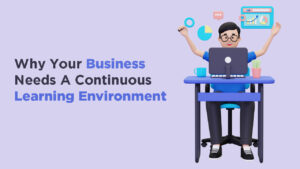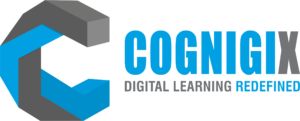In today’s competitive job market, new hires seek purpose, engagement, and growth beyond just salary expectations. As workplace dynamics continue to evolve, organizations must adopt structured, engaging onboarding programs to enhance productivity, job satisfaction, and employee retention.
Effective onboarding is more than just an orientation—it’s an opportunity to:
✅ Immerse new employees in company culture, values, and goals.
✅ Improve engagement through interactive learning experiences.
✅ Create lasting impressions that foster long-term commitment.
One of the most effective strategies for achieving this is gamification—integrating game mechanics into onboarding to make learning interactive, rewarding, and motivating. By incorporating game-based elements, organizations can ensure that new hires retain information better, stay engaged, and feel more connected to their new roles.
How Gamification Enhances Employee Onboarding
Traditional onboarding often involves endless paperwork, training videos, and passive learning, which can make the process dull and overwhelming for new hires. Gamification transforms onboarding into an engaging journey, where employees complete challenges, earn rewards, and track their progress, making learning both fun and effective.
Let’s explore some of the most widely adopted gamification elements in employee onboarding:
1. Progress and Achievement
Recognizing employees for completing onboarding tasks fosters motivation and a sense of accomplishment. For example:
✅ Creating a task checklist that employees must complete during onboarding.
✅ Sending a personalized “Good Job” email or a digital badge upon task completion.
✅ Implementing a point system or leaderboard to reward engagement.
Studies show that 69% of employees who participate in structured, engaging onboarding programs are more likely to stay with the organization. Acknowledging employees’ progress early on builds confidence and long-term commitment.
2. Leveling Up
In video games, “leveling up” means completing specific challenges before unlocking the next stage. The same principle applies to onboarding, where employees progress through training milestones before taking on new responsibilities.
For example:
🔹 A content writer may be required to submit sample articles before being assigned real projects.
🔹 A sales representative may need to complete product training modules before interacting with clients.
By setting clear milestones and rewarding progress, organizations can keep employees engaged while gradually increasing their responsibilities.
3. Interactive Quests
Instead of making employees passively consume information (e.g., watching an hour-long video on company policies), gamification introduces interactive quests that encourage active learning.
For example:
🔸 Instead of watching a lengthy “Code of Conduct” training video, new hires can collaborate in a scavenger hunt-style challenge, where they research and discuss policies with teammates.
🔸 Employees can engage in scenario-based learning where they make decisions and receive real-time feedback.
This hands-on approach helps reinforce knowledge while making learning more memorable and enjoyable.
Real-World Example: Deloitte’s Gamified Onboarding
Many leading organizations have successfully implemented gamified onboarding to boost engagement and efficiency.
For example, Deloitte, a global professional services firm, introduced a gamified onboarding program called “Zombie Apocalypse” in 2018 for new analysts. This immersive experience focused on:
✔ Developing consulting skills through interactive scenarios.
✔ Teaching software tools through engaging challenges.
✔ Reducing annual onboarding costs while improving retention rates.
The success of Deloitte’s gamified approach highlights the cost-effectiveness and long-term benefits of using gamification to enhance onboarding.
Why Gamification is the Future of Onboarding
✅ Boosts Employee Engagement – Interactive experiences foster excitement and enthusiasm.
✅ Enhances Knowledge Retention – Active participation improves learning outcomes.
✅ Encourages Collaboration – Employees build connections through shared challenges.
✅ Reduces Training Costs – A well-structured gamified program minimizes onboarding time and expenses.
✅ Drives Long-Term Retention – Employees who feel engaged from day one are more likely to stay.
By gamifying the onboarding process, organizations can create a fun, rewarding, and impactful experience that sets employees up for long-term success.
Looking to transform your onboarding process? Explore the power of gamification today!






